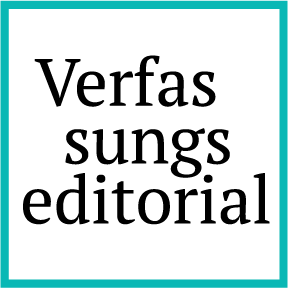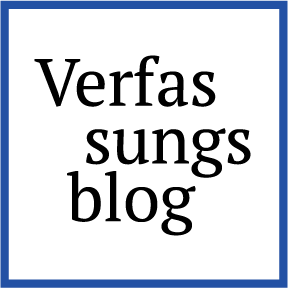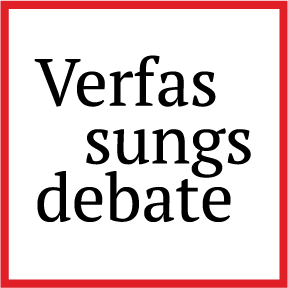Unlocking Potential
Why and How We Should Revise Copyright Exceptions for Educational Purposes in the EU
EU copyright law’s teaching exceptions do not deserve a perfect grade. The law unduly privileges classical teaching practices by traditional educational institutions over more informal ways of teaching, it grants too much power to publishers, and it allows for differences in transposition, which hinder cross-border teaching projects and negatively impact the common market. Each of these elements should change. In the following, I will explain why – and how.
For a long time, EU copyright law allowed but did not require Member States to provide for a teaching exception to the reproduction right and the right of communication to the public (Art. 5 (3) (a) InfoSoc Directive). Virtually all Member States enacted such an exception, but the content and scope of the provisions varied. In order to raise the level of harmonisation and legal certainty, the EU decided to tighten the grip. In 2019, it obliged Member States to allow the use of works in digital and cross-border teaching activities (Art. 5 CDSM Directive). When the COVID-19 pandemic hit the continent, most Member States were still in the process of transposing the CDSM Directive into national law.
In the following months, with schools, universities, libraries and bookstores closed, digital teaching was all that was left. The pandemic brought about fundamental and lasting changes in the way we teach and learn, and it forced us to make massive use of digital tools, which had long been at our disposal but to which only few had given any real attention. When using these tools, many of us realised both their potential and their limitations: a combination of analogue and digital teaching elements is king. Nowadays, most classrooms are hybrid.
The pandemic did not only force us to reconsider our teaching practices. It also allowed us to test the adequacy of Art. 5 CDSM Directive on a scale, which the EU legislator had not envisioned. The verdict is: there is room for improvement.
Broaden the scope of permitted teaching activities
According to Art. 5 (1) (a) CDSM Directive, teaching activities must be conducted “under the responsibility of an educational establishment”, and “on its premises or at other venues, or through a secure electronic environment accessible only by the educational establishment’s pupils or students and teaching staff“. As the pandemic has shown, both requirements lead to an undue limitation of the scope of the exception.
Focus on the activity, not the institution
The CDSM Directive does not define the term “educational establishment” (cf. Art. 2). Recitals 20 and 22 indicate that the term is to be understood broadly. The establishment’s organisational structure and its means of funding should not be decisive; exams and activities taking place in cultural heritage institutions should be covered as well. And yet, the term is to include only “educational establishments recognised by a Member State” (Recital 20 s. 2): Teaching activities conducted either by establishments whose primary focus is not teaching, such as NGOs, or by people who provide educational services privately, are not included, no matter whether they operate pro bono or not. Even non-commercial educational activities that (public) schoolteachers conduct outside of their day job do not fall within the scope of Art. 5 CDSM Directive – despite the fact that those teaching activities do not necessarily hold lesser social value than those conducted in formal educational settings. In fact, they might engage audiences for whom conventional educational institutes are less accessible, and might be innovative, both in terms of the content they cover and in their use of technology. As long as these informal activities are non-commercial in nature, they do not pose a greater threat to the interests of rightsholders than teaching activities by big institutional actors.
The drafters of the InfoSoc Directive might have been aware of that fact. Art. 5 (3) (a) InfoSoc Directive does not require that (offline) teaching be conducted in affiliation with an educational establishment. As such, the CDSM Directive provides for stricter requirements than its older sister. Educators who work outside classical institutions as well as non-educational entities, which operate in countries with liberal transpositions of Art. 5 (3) (a) InfoSoc Directive, thus have more room to manoeuvre if they teach offline than they do if they opt for online activities. Those differences are not warranted, and they could hamper blended teaching activities. To change this state of affairs, the EU could turn the nature of the educational activity into the sole decisive factor: non-commercial teaching activities should be privileged.
Allow for open classrooms
Over the past two decades, classrooms have become bigger and more amorphous. With the help of digital technologies, educators have been able to assemble people from around the world in one virtual classroom. Pioneers of such Massive Open Online Courses (MOOCs) are Harvard and MIT with their online learning platform edX. edX is used by over 86 million people worldwide (while Harvard has an enrolment of roughly 20,000 degree candidates and a little over 360,000 alumni). Many of Harvard’s courses on edX are available free of charge. Such courses allow people who don’t have the means or the resources to attend the likes of Harvard to broaden their knowledge and mindset and are especially valuable in times of growing disinformation and increasing scepticism towards scientific knowledge.
And yet, in the EU, teachers of MOOCs may not use copyrighted material without permission – except for quotations complying with Art. 5 (3) (d) InfoSoc Directive. Depending on the interpretation of Art. 5 (1) (a) CDSM Directive, this might be true even for providers of MOOCs connected to an educational establishment. By definition (open online course), a MOOC does not provide “a secure electronic environment accessible only by the educational establishment’s pupils or students and teaching staff“, unless the term “student” is to be understood as a person who studies the contents of the course in question. When the Commission started its work on what would become the CDSM Directive, it explicitly decided that MOOCs should not profit from the teaching exception. Nine years later, this decision against the broad diffusion of knowledge seems wrong. The Commission was worried that “users would be allowed to copy protected content and make it widely available online through education blogs or websites”. That, however, is no reason to categorically exclude large, open educational projects from the scope of Art. 5 CDSM Directive. The Commission’s worries can be addressed by limiting the privilege to courses, which require authentication by participants before they are granted access to copyrighted material (cf. Recital 22 s. 3). One should be mindful that the restrictions on the scope of allowed uses (Recital 21 s. 3, 4), and/or the requirement that the use be compensated (Recital 24) work as additional safeguards for rightsholders.
Tighten the scope of licence carve-outs
Art. 5 (2) CDSM Directive allows Member States to decide whether works may only be used, or only be used for certain purposes, if rightsholders do not offer suitable licences tailored to the needs of educational establishments. If Member States make use of that option, they have to ensure that the licences are “available and visible in an appropriate manner for educational establishments”. The EU wanted to strike a balance: allowing Member States to maintain existing licence arrangements (Recital 23 subpara. 1 s. 5) designed to incentivise the creation of high-quality educational resources without putting too high a burden on educational establishments; the carve-out for licences should “not hamper the effective application of the exception or limitation or cross-border uses” (Recital 23 subpara. 1 s. 3).
While the intention might be laudable, the EU has, in practice, given too much leeway to Member States. According to Art. 5 (2) CDSM Directive, Member States may allow licences for educational resources and sheet music to take preference over their teaching exception or limitation. However, the carve-out does not have to be limited to these areas. Thus, Member States can bow to pressure from publishers and provide that a licence offer is given preference over a national exception or limitation even if it is not restricted to educational materials but covers mainly other content as well. Those broad licence carve-outs are not warranted; the market for content not primarily intended for educational purposes does not suffer if parts of such content are used for teaching purposes.
Educational establishments, meanwhile, are burdened with finding possible licence offers and negotiating individually. The EU does not give Member States too much guidance as to the conditions that must be fulfilled in order for a licence to be “suitable”, “available” and “visible”. It encourages Member States to base licensing schemes on collective or extended collective licensing (Recital 23 subpara. 2 s. 4) but does not require them to do so. Consequently, the scope of licence carve-outs and the requirements that licences must fulfil in order to gain preference over the limitation or exception vary significantly between the various Member States.
Raise the level of harmonisation
The EU has given too broad a margin of appreciation to the Member States, thereby creating stumbling blocks for those cross-border teaching activities that Art. 5 CDSM Directive is designed to foster. The varying size of the licensing carve-out is but one example. Member States may specify, for different types of works, how big a portion of a work may be used; in most cases, only the use of “parts” or “excerpts” will be justified (Recital 21 s. 3, 4). Different Member States have understood these terms differently and have found different ways of transposing them into their national laws. The same is true for the option that uses should only be allowed if rightsholders are granted fair compensation (Recital 24). Accommodating national traditions by granting Member States various options for limiting the scope of an exception may have the unintended consequence that Member States introduce new limiting requirements in addition to the ones that were already in place – with the strange effect that since the transposition of the CDSM Directive, educators must navigate stricter requirements than when Art. 5 (3) (a) InfoSoc Directive was the only law of the land.
The country-of-origin rule, which Member States must provide for (Art. 5 (3) CDSM Directive), mitigates some of these negative effects. And yet, differences abound, and these differences can hamper those teaching projects, which are jointly conducted by teaching establishments from different member states or by teachers who move between Member States, thereby impacting the Single Market. In addition, they can impede the diffusion of knowledge, which creates tension with Art. 14 CFR and might produce serious social costs.
The teaching exception, then, is but one more area of EU copyright law that calls for a more forceful approach: we need a European Copyright Act – a regulation, not a directive – infused with the realisation that copyright law forms the master switch for the way we teach and learn and thus for Europe as a democratic knowledge society.



